- Reporters not allowed to speak to children to guard against false hope
- Ishinomaki confirms the huge number of its citizens missing
- North Eastern port town was hit by 20ft tsunami
- Fears that overall death toll has been terribly underestimated
They sit quietly in the corner of a third-floor classroom where they have waited each day since the tsunami swept into the town of Ishinomaki for their parents to collect them. So far, no one has come and few at the school now believe they will.
Teachers think that some of the boys and girls, aged between eight and 12, know their fathers and mothers are among the missing and will never again turn up at the gates of the school on the eastern outskirts of the town, but they are saying nothing.
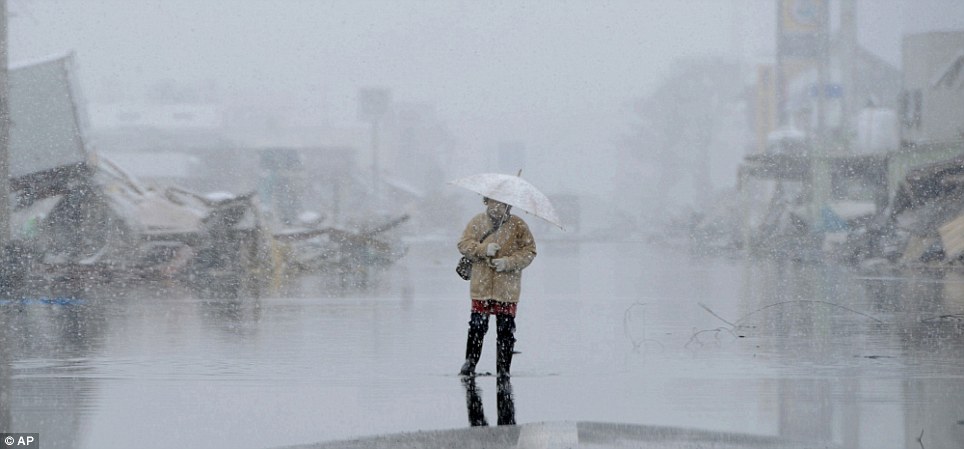
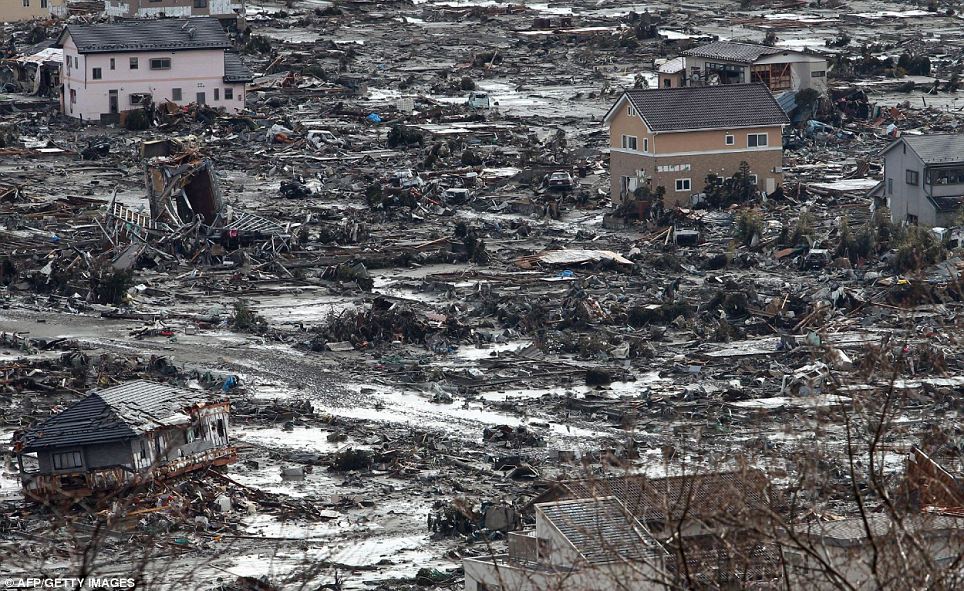
Instead, they wait patiently reading books or playing card games watched over by relatives and teachers, who prevent anyone from speaking to them.
Officials fear that even the sound of the door sliding back might raise false hope that a parent has come to collect them. Their silence is in marked contrast to other children playing in the corridors of the four-storey building, whose parents survived due to a complete fluke.
Sports teacher Masami Hoshi said: 'The tsunami came just when the parents of the middle age group were starting to arrive to collect their children so we managed to get them inside and to safety.
'The younger ones had left with their parents a little earlier. The ones who went to homes behind the school probably survived, the ones who went the other way probably didn't.'
The school, where children's paintings still line the walls, has no running water, electricity or heating but is home to 657 people living among corridors and rooms filled by mud and debris. It is a mile from the sea wall that was meant to protect Ishinomaki.
When the tsunami struck, 160,000 people were living in the town, which is about 50 miles north-east of Sendai. So far 425 have been confirmed dead with another 1,693, including the parents of the 30 pupils, listed as missing.
The terrible toll of Japan's double disaster became clearer as it emerged as many as 25,000 people could be dead after Ishinomaki officials confirmed that 10,000 of their citizens were missing.
The estimated 10,000 people missing in Ishinamaki is the same figure given as in the town of Minamisanriku, also in Miyagi state, which lost around half its population when it was razed to the ground by the 20 foot high wall of water.
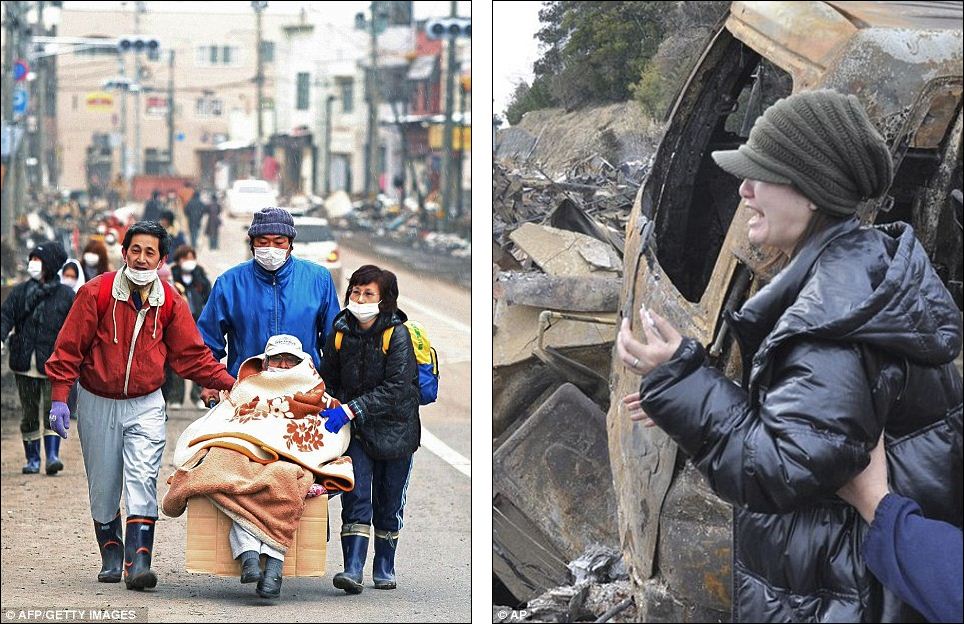
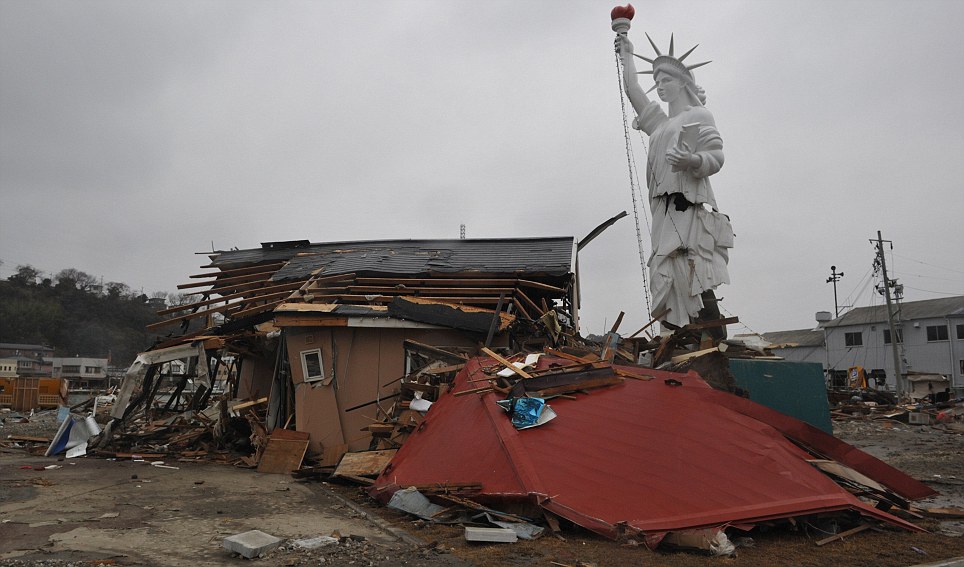
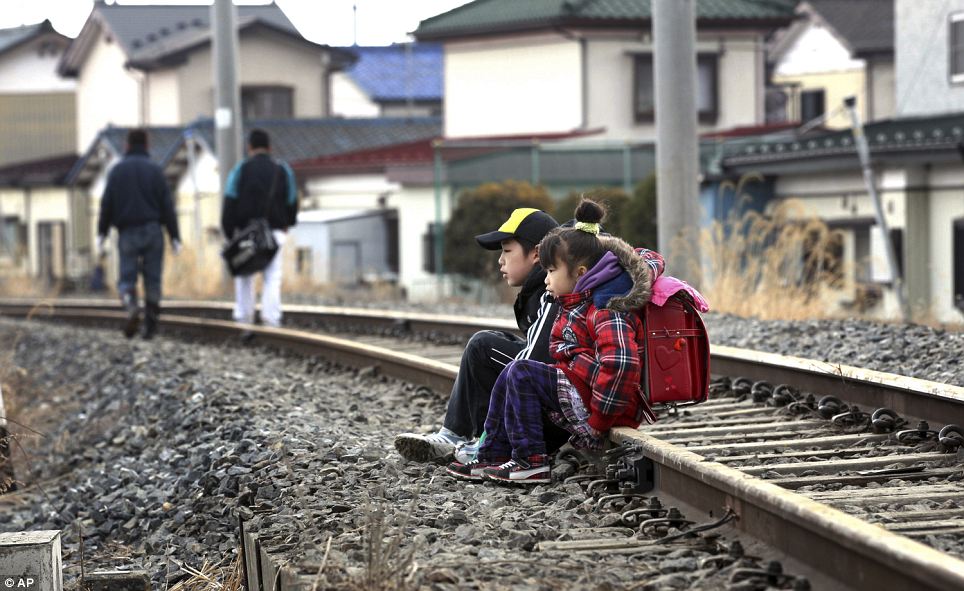
Across the country some 434,000 people have been made homeless and are living in shelters.
Ken Joseph, an associate professor at Chiba University, is in Ishinomaki with the Japan Emergency Team.
He told the Evening Standard: 'I think the death toll is going to be closer to 100,000 than 10,000.
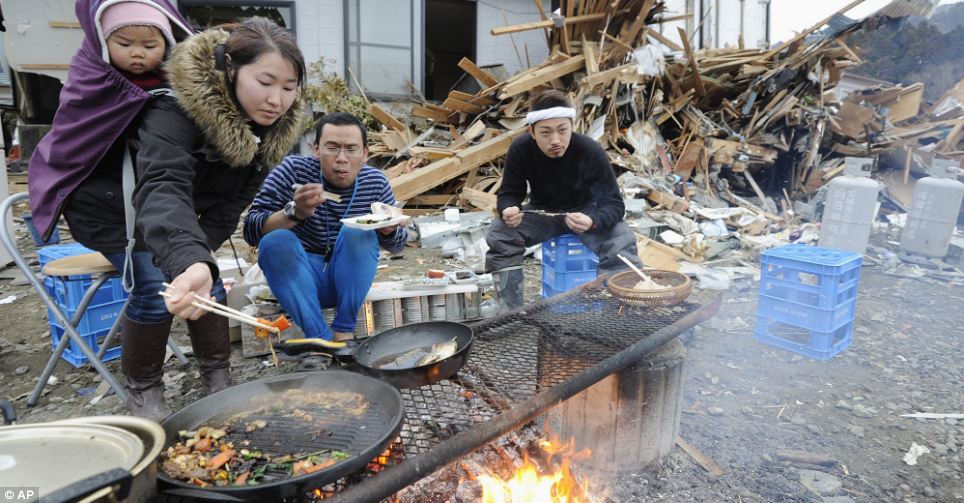
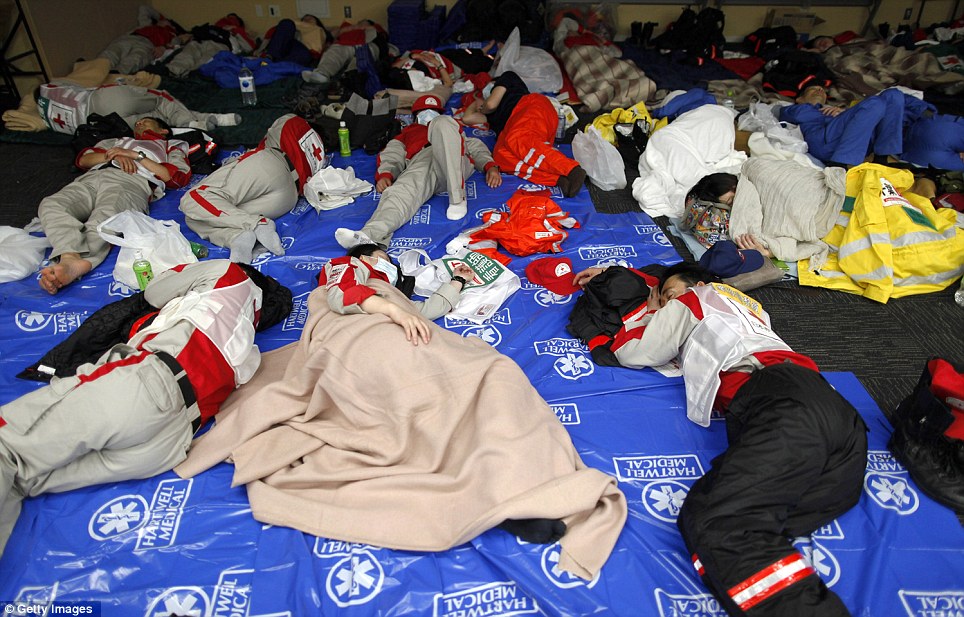
He said the Prime Minister was 'a wonderful man in many ways' but indecisive as a leader: 'In yesterday's press conference on the nuclear reactor, he looked like he was going to cry, like a man having a nervous breakdown.
'Where is the sense of urgency? We need somebody to take charge. We've had an earthquake followed by fire, then a tsunami, then radiation, and now snow. It's everything.
'There is nothing left. The world needs to step in. Where are the Americans? The Japanese are too proud to ask, but we need help and we need it now.'
In one of the shelters for the evacuated, Motoko was worried for her daughter Yukiko, a teacher missing with her class of children.
She told the Standard there is still no official list of those who have been evacuated: 'For all I know my daughter thinks I'm dead and I have no way of knowing if she is alive because mobile phones here don't work here.
'This is day five, day five! Why is there still no list for people to track their relatives?'
France has urged its citizens with no reason to stay in Tokyo to return to France or head to southern Japan, while the UK's Foreign & Commonwealth Office advises against all non-essential travel to Tokyo and northeastern Japan.
This afternoon, Australia became the latest country to advise its citizens to consider leaving Tokyo and earthquake-affected areas.
But the scale of the destruction has been highlighted by the heart-breaking individual stories of heroism and tragedy, such as that of Katsutaro Hamada, 79, who fled to safety with his wife after the quake.
But then he went back home to retrieve a photo album of his granddaughter, 14-year-old Saori, and grandson, 10-year-old Hikaru
Then the tsunami came and swept away his home. Rescuers found his body, crushed by the first-floor bathroom walls.
He was holding the album to his chest, Kyodo news agency reported.
'He really loved the grandchildren. But it is stupid,' said his son, Hironobu Hamada. 'He loved the grandchildren so dearly. He has no pictures of me!'
Teenager Minami Sato grabbed her grandmother when she spotted the huge wave, and ran to the tsunami shelter, only to see dozens there starting to run.
She reached the bottom of a mobile phone tower, and watched the surging sea sweep over the refuge below them, picking up 16 cars which had been parked neatly in a row and cramming them chaotically together into a corner of the car park.
It had breached the the 20ft-high walls along the harbour - hundreds of feet of thick concrete slabs - which had been designed to stop it.
Below, the ocean had swallowed all of Shizugawa, part of Minamisanriku, rising above a four-storey shopping centre and the town's hospital, two of the few buildings still standing - but totally gutted - when the wave receded.
She said the colossal wave which slammed into Shizugawa last week 'was beyond imagination.
'There was nothing we could do, but run.'
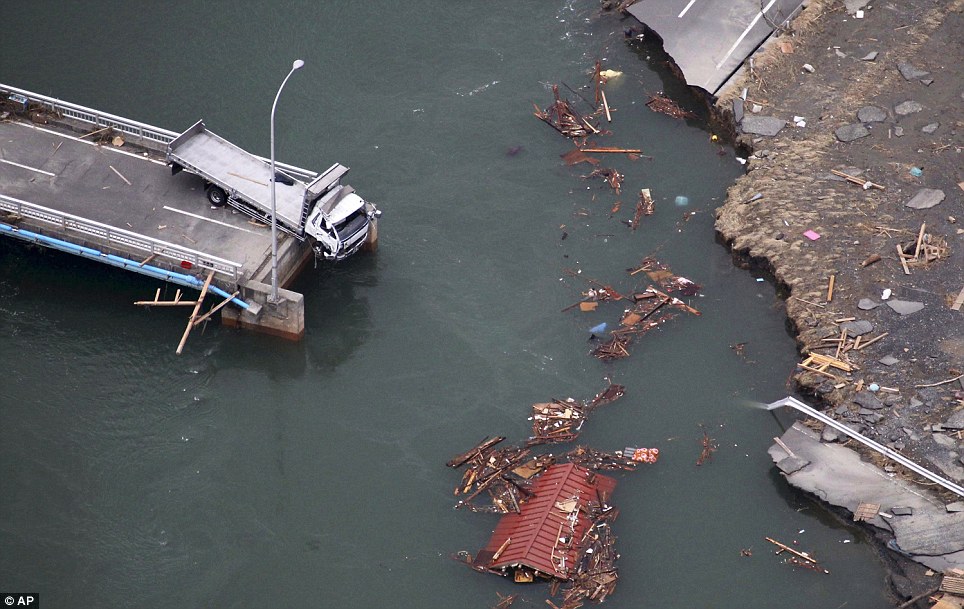



The Americans are making sure that the wars and killing continue in the Middle East. This horrid disaster is a great "distraction" from what they are doing to keep the fighting going in the Middle East.
That's what you get with psychopaths. They have no empathy, compassion or conscience. Others' suffering has no meaning to them.